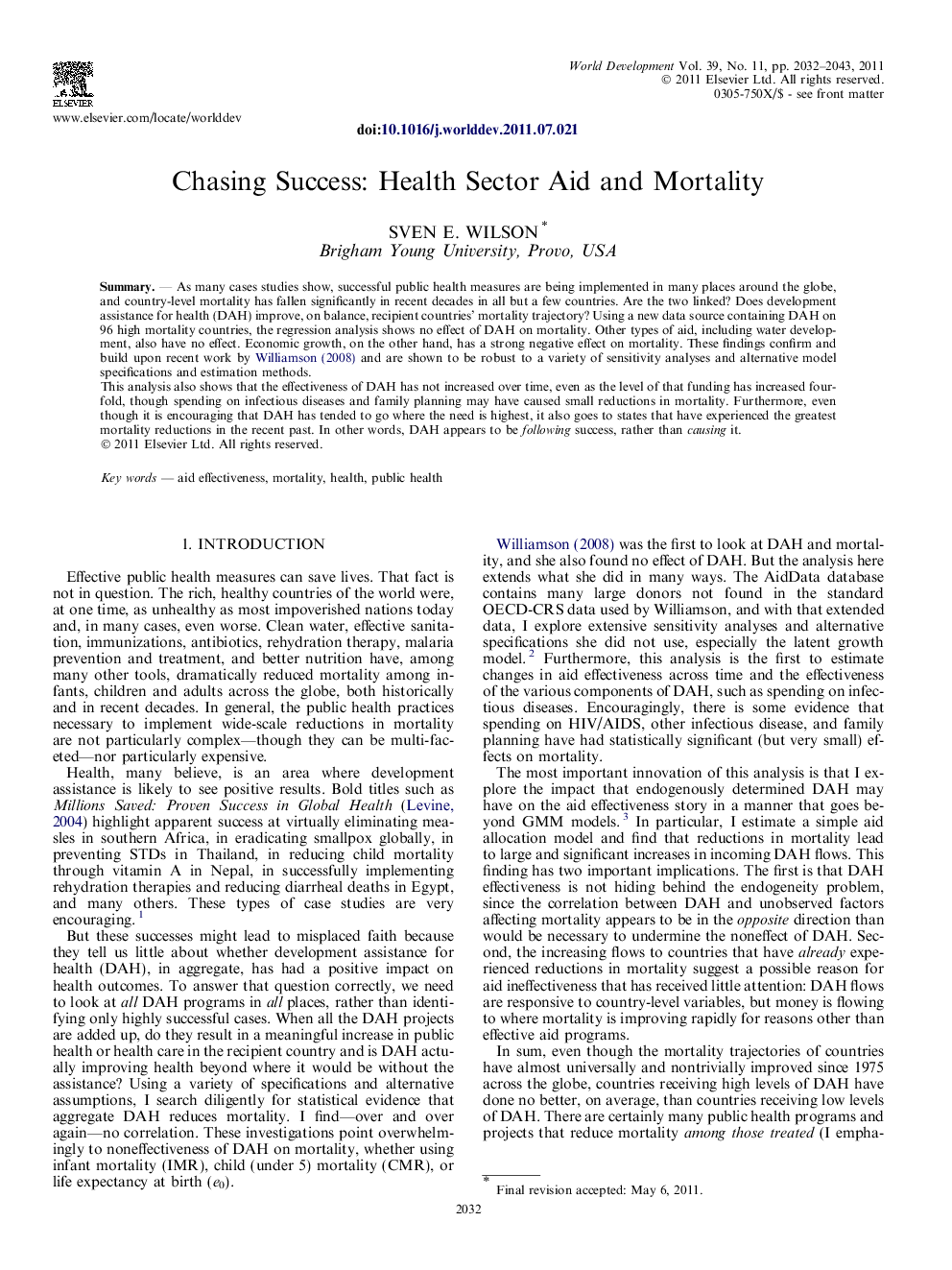| Article ID | Journal | Published Year | Pages | File Type |
|---|---|---|---|---|
| 990849 | World Development | 2011 | 12 Pages |
SummaryAs many cases studies show, successful public health measures are being implemented in many places around the globe, and country-level mortality has fallen significantly in recent decades in all but a few countries. Are the two linked? Does development assistance for health (DAH) improve, on balance, recipient countries’ mortality trajectory? Using a new data source containing DAH on 96 high mortality countries, the regression analysis shows no effect of DAH on mortality. Other types of aid, including water development, also have no effect. Economic growth, on the other hand, has a strong negative effect on mortality. These findings confirm and build upon recent work by Williamson (2008) and are shown to be robust to a variety of sensitivity analyses and alternative model specifications and estimation methods.This analysis also shows that the effectiveness of DAH has not increased over time, even as the level of that funding has increased fourfold, though spending on infectious diseases and family planning may have caused small reductions in mortality. Furthermore, even though it is encouraging that DAH has tended to go where the need is highest, it also goes to states that have experienced the greatest mortality reductions in the recent past. In other words, DAH appears to be following success, rather than causing it.
